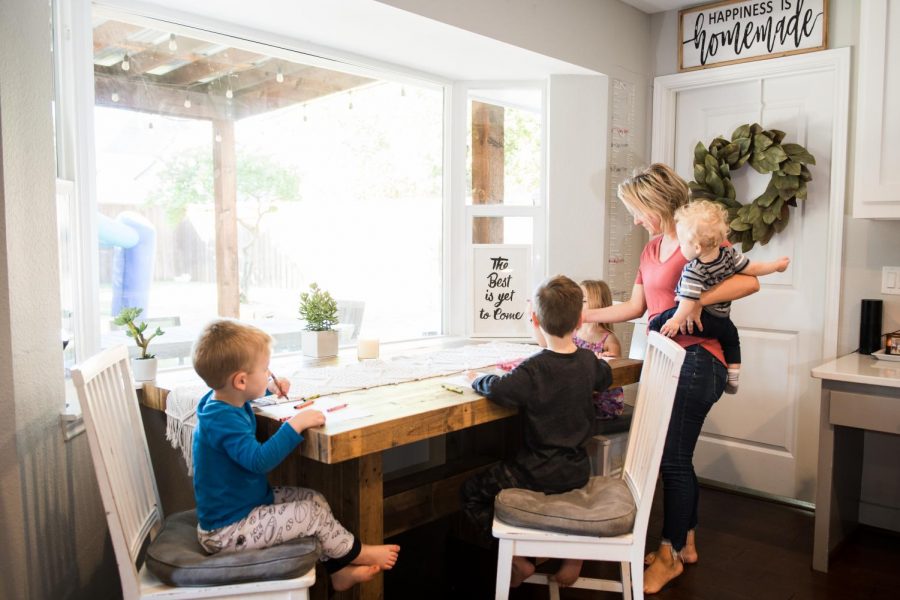Students and professors with children juggle classes, parenting
June 17, 2020
As COVID-19 brought on school closures, professors and students found themselves transitioning quickly to an online teaching and learning format. For professors and students with children, navigating classes while parenting created new challenges.
Online classes are not new or unprecedented for the Dallas County Community College District, but the immediate transition of all on-campus classes to an online format was. Amy Meeker, mother of seven and Brookhaven student, was enrolled in a nighttime chemistry class at Brookhaven that she needed to transfer to Texas Woman’s University.
Meeker took classes on campus because she wanted in-person instruction. “If I had wanted to learn online, I could have done that from the get-go,” she said. Online learning made the lab component of the class more difficult. Dealing with the transition to online learning, caring for seven children at home and still having to work was overwhelming, she said. The class was no longer working for her, and she had to drop it.
Silvia Graham, world languages faculty professor at Brookhaven, had taught Spanish online before becoming full-time faculty. Because of her previous experience, she is no stranger to online teaching. But she said she has tried to offer her Early College High School students as many accommodations as possible because they did not sign up for an online class.
While Graham does not have live online lectures, she makes herself available for her students to check in and ask questions during the time she would normally give in-person lectures. “Families have shared [computing] resources,” Graham said. “They may have two to three hours a day to work on their subjects, so I don’t want to take up an hour of that time with lecture.”
Graham has older children at home. She says she checks their work on Google Classroom, but does not have to monitor them constantly. She said because they are older, they are pitching in more around the house to make things work.
Jennifer Laughlin, Brookhaven math professor, said teaching math with a 3-year-old at home was an adjustment because her husband also teaches during the day. Without traditional childcare, Laughlin said finding a work-life balance was a struggle in the beginning, especially for her young daughter. “She’s used to having 10-20 kids around her,” she said. “She’s never been this lonely before.”
Laughlin said she found her stride after the first couple of weeks once she figured out the best technology to help her teach. She uses Blackboard and Microsoft Paint to show math problems, but she also records her own videos as an additional study aid for her students.
Aside from managing her work-life balance, the most difficult thing about the transition is the inability to read her students’ reactions, Laughlin said. She said she relies on body language cues from her students to tell her when she needs to slow down or review a topic. “I miss the classroom. I miss my students,” Laughlin said. “I want the interaction. It’s what I looked forward to most in my job.”
Laughlin said some of her students like the emergency online classes that have replaced in-person classes, the kind that comes with scheduled video conference lectures. She says she fears they will think that is what regular online classes are like, and mistakenly sign up for them instead of regular classes next semester. “This is not how online classes work,” she said.



